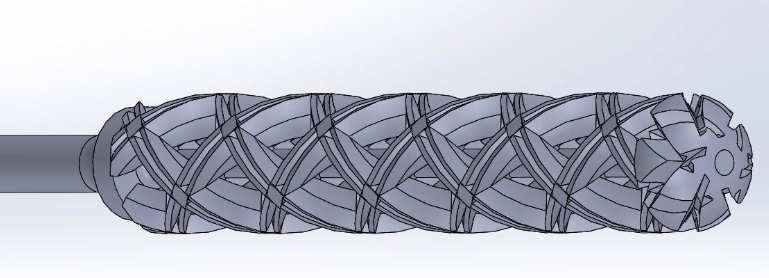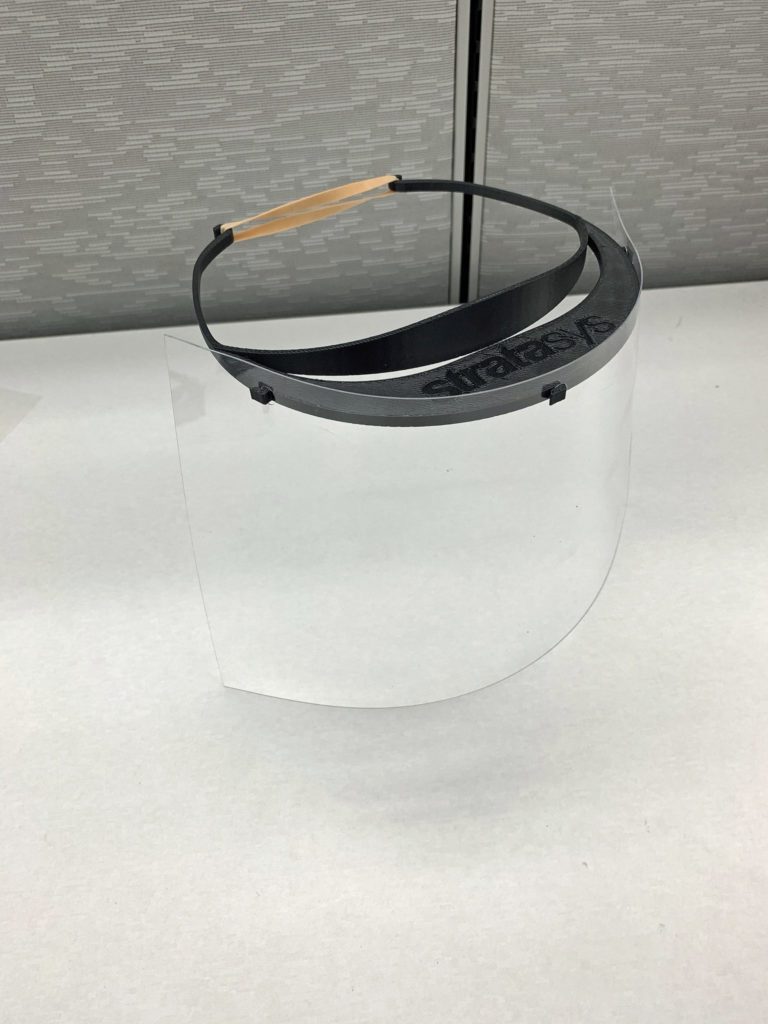It seems to be the case that 3D printing-related relief efforts are beginning to coalesce with government and medical regulatory efforts to, hopefully, ensure that rapid response to the COVID-19 outbreak from the additive manufacturing (AM) community is safe and reliable. The efficacy of the collaboration between these disparate parties is still too early to evaluate easily, however, and we will have a better picture of what this collaboration looks like over time.
Meanwhile, efforts are continuing to provide 3D printed products to fulfill needed medical supplies, sometimes with the help of medical experts and sometimes without. The line between marketing initiative and humanitarianism continues to be blurred.
As reported earlier, Formlabs is already deploying 3D printed nasal swabs to aid in hospitals in Florida and New York, while Carbon attempts to validate its own nasal swabs. Now, EnvisionTEC is 3D printing nasopharyngeal (NP) swabs for specimen collection for testing, as well as ventilation splitters similar to those previously covered that diverts air from ventilation systems to multiple patients.
To do so, the company is collaborating with the FDA and local Detroit hospitals to print the parts from a Class 1 material. For the NP swabs, EnvisionTEC is working with the Harvard Microbiology Lab and a larger consortium of academic and AM partners. Nilson Laboratories, has designed a flexible swab and printed 400 units in a Class 1 material. These items are still undergoing testing and approval before deployment in the field.
Though a number of entities are 3D printing face shields, Huaxiang Group, Farsoon and LEHVOSS Group are 3D printing safety goggles to protect the highly exposed mucous membrane of the eyes of medical staff. Medical 3D printing experts from Huaxiang Group in China were able to develop, optimize and validate weight-optimized, 3D printed goggles in a span of 10 days, 3D printing nylon goggle frames and flexible thermoplastic polyurethane sealing rings on Farsoon systems. These parts are then combined with acrylic lenses coated with anti-fogging material.
Huaxiang 3D printed and assembled 1000 pairs of goggles for the Red Cross Society of China as of March 18 and is in the process of producing a second batch for use locally and abroad, including for Italian hospitals and in conjunction with Italian service bureau Prosilas Rapid Prototyping. The design files for the goggles are freely available online.
Other efforts underway include the establishment of a coalition by Stratasys that currently hosts over 150 members, such as Toyota Motor Company, Boeing, the University of Central Florida and more. The company is inviting any party capable of printing a minimum of 100 face shields daily to join by filling out an online form. The group is in the process of building over 11,000 face shields for delivery next week and 16,000 the following week.
Italian arms manufacturer Beretta is continuing to operate through the pandemic due to its status as a critical weapons asset in Italy. To address the crisis, the company is 3D printing replacement Venturi valves on its selective laser sintering machines.
Siemens has opened its Additive Manufacturing Network and its own 3D printing capabilities up to healthcare providers for the rapid production of medical parts. Medical professionals can register for access online.
All of this corporate participation in the fight against the COVID-19 outbreak raises a number of larger questions about whose responsibility it is to manage production under disaster response. We’ve seen how potentially authoritative government control via enforced quarantine can lead to a comparatively quick management of the coronavirus, while laissez faire approaches to management have led to widespread mismanagement and havoc.
Whereas nations have the possibility of mandating their manufacturers to produce vital medical supplies to combat the pandemic—such as with the Defense Production Act in the U.S.—governments with laissez faire economic management approaches are relying on manufacturers to take it upon themselves to do what they believe is best. The result is the ad hoc approach we are seeing with coalitions made up of trade associations, businesses, governments and regulatory bodies.
The case of General Electric is an interesting example. As we’ve previously reported, GE Healthcare is working with Ford to produce simplified versions of GE’s ventilators. However, workers from GE Aerospace in Lynn, Massachusetts are currently protesting that the facility is continuing to manufacture jet turbine parts instead of ventilators. This occurred just as GE announced a massive round of layoffs in which 10 percent of its aviation workforce would be let go in an attempt to save the company $500 to $1 billion. This brings up the point we’ve stressed about whether or not some 3D printing initiatives by businesses in response to the coronavirus outbreak are less about manufacturing needed supplies and more about marketing and appearance.
All of this is to say that, while a nation’s government could simply make demands of its manufacturers to produce the necessary medical equipment and distribute those supplies based on where they are needed, nations with laissez faire bureaucracies are instead relying on ad hoc networks with potentially dangerous manufacturing and distribution procedures. That is why the efforts of regulatory bodies and national and continental 3D printing trade groups, such as those discussed in our last article, may be essential to combat the outbreak. They are essentially (hopefully) bringing order and safety to an otherwise impromptu disaster response.
As the coronavirus outbreak continues to wear on, it is hoped that these diverse efforts will continue to coalesce in non-competitive ways with government and medical bodies better coordinating these disparate groups and ensuring proper regulations are followed. In the meantime, as the novelty of 3D printing for use in a public health emergency wears off, it is also hoped that the marketing takes a backseat to genuinely useful production of needed medical supplies.
Subscribe to Our Email Newsletter
Stay up-to-date on all the latest news from the 3D printing industry and receive information and offers from third party vendors.
Print Services
Upload your 3D Models and get them printed quickly and efficiently.
You May Also Like
The Dental Additive Manufacturing Market Could Nearly Double by 2033, According to AM Research
According to an AM Research report from 2024, the medical device industry, specifically in dentistry, prosthetics, and audiology, is expected to see significant growth as these segments continue to benefit from...
Heating Up: 3D Systems’ Scott Green Discusses 3D Printing’s Potential in the Data Center Industry
The relentless rise of NVIDIA, the steadily increasing pledges of major private and public investments in national infrastructure projects around the world, and the general cultural obsession with AI have...
AM Research Webinar Explores Continuum’s Sustainable Metal Additive Manufacturing Powders
Metal additive manufacturing (AM) powder supplier Continuum Powders is working to develop solutions that empower industries to reduce waste and optimize their resources. An independent life cycle assessment (LCA) of...
3D Printed Footwear Startup Koobz Lands $7.2M in Seed Round
California-based Koobz is focused on reshoring the U.S. footwear supply chain with advanced manufacturing processes, including 3D printing. The startup just announced that it has added $6 million to its...




































